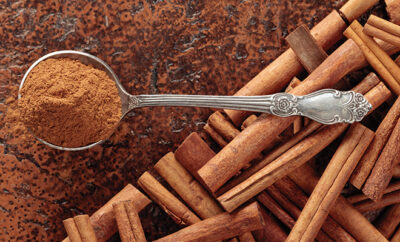
Culinary Herbs: Growing Your Own Is Part of The fun
For many talented cooks, using herbs is an essential part of making a meal. Growing your own herbs, either indoors or outside, is easier than you might think. And, it’s fun. Here are four popular herbs to use and grow, adding beauty to a garden or a sunny windowsill.
Basil does best in rich soil and a lot of sunlight. Outside, it’s a delicate annual. However, with a little care, basil grows well indoors. The herb can be grown with a seed starter kit or from cuttings placed in a jar of water located on a sunny windowsill until the roots begin to show, about three weeks. Plant outside when the soil is warm. Pinch back flowers and start to prune the shoots when plants are about six inches tall.
Use basil to make pesto, of course. (You can make parsley or cilantro pesto, too.) Basil adds a wonderful flavor to pasta sauces, fish, eggs, saffron rice or flavored butter; try this on grilled corn on the cob. You can even add basil to lemonade. Here’s a classic. Place fresh sliced tomatoes on a plate, top with thinly sliced sweet onion, lots of chopped basil leaves, some feta and a drizzle of olive oil.
A hardy onion, chives are popular all over the world. You can grow them indoors in containers or outside in the garden. They’ll come back each spring, with flowers that will attract pollinators and that rabbits and deer will ignore. They can also be used to repel destructive garden insects.
Plant clumps of chives directly in fertile soil, about eight inches apart, adding a few handfuls of compost or potting soil to each when planting. Keep well watered until the plants are established. If growing indoors, use potting soil, not pure compost or garden soil. To harvest, simply clip the leaves with a scissors, leaving a couple of inches so the plant will continue to regrow all season.
Chives are famous in cream cheese, but they’re great added to mashed potatoes or in potato salad. Try adding chopped chives to cornbread, mushroom risottos, macaroni and cheese, in quiches or with grilled seafood. Take chive buds, not open blossoms, on the stem and simmer in chicken broth until tender, checking after just a couple of minutes. This Asian-inspired vegetable is an easy, delicious side dish.
Horseradish does best in cooler climates, thriving in frigid environments where it’s one of the first plants to emerge in the spring. It’s an attractive plant, growing up to three feet tall, with large, dark-green leaves. You can harvest the root from the fall to the early spring, using a digging fork to avoid damaging the root.
To grow, buy a horseradish root in your grocer’s produce aisle, dig a hole deep enough for the root, add some compost and plant at a 45-degree angle with the top of the root a couple of inches below the soil line. Water about once a week, if needed.
To use, peel the root and grate it as finely as possible. It’s best to do this in a very well-ventilated area to keep the fumes from burning your eyes. Add a couple of tablespoons of vinegar and one-half teaspoon salt per cup of grated horseradish. The more vinegar used, the milder the flavor. You can store this in your refrigerator for up to six weeks.
Use horseradish with strongly flavored grilled fish or steak. Mix with yogurt for a veggie dip with a kick. Or add horseradish to your deviled egg recipe. Or, take a quart jar, fill with crushed horseradish leaves and add vodka. Wait a couple of days and pour off the vodka (you can repeat using the same leaves) to create a snappy Bloody Mary or even a martini. Yowzer!
Oregano is a perennial and is easy to grow both indoors and in the garden. Indoors, water only when the soil is dry to the touch. Feed with liquid fertilizer and give it morning sun. Plant oregano outside in a sunny location, in well-drained soil after the danger of frost has passed. This herb is a member of the mint family and, like most mints, it can escape your garden. Mow your lawn and you might be reminded of pizza.
Oregano is a key ingredient in many marinades, adding a woodsy flavor. For grilled chicken marinade, mix together a quarter cup of olive oil with the zest and juice of two lemons, a large pinch of salt, five cloves minced garlic, a grind or two of black pepper and a tablespoon of dried or fresh oregano. Brush six chicken thighs, then cover with plastic wrap and refrigerate for an hour or two. Sprinkle thighs with smoked paprika and grill as usual, over direct medium heat, or bake at 350º for 25 to 35 minutes.







